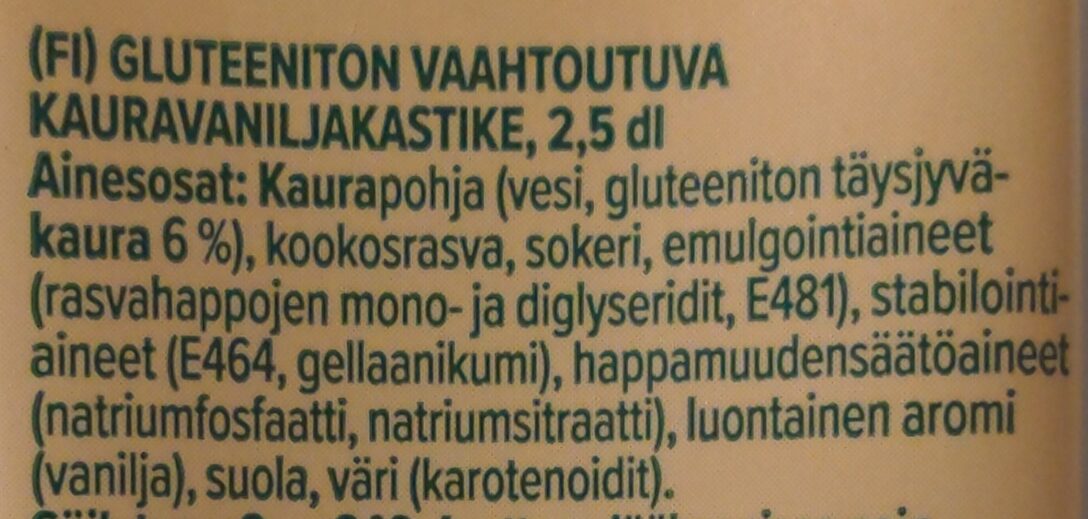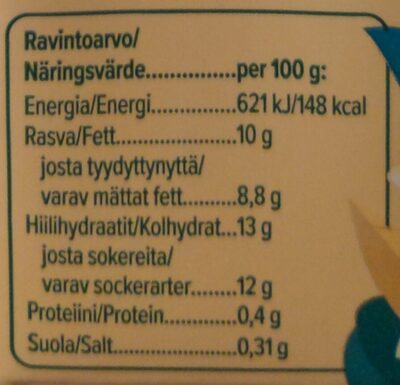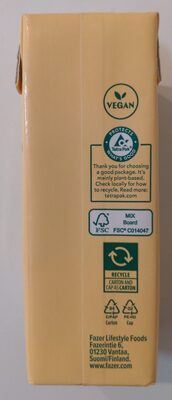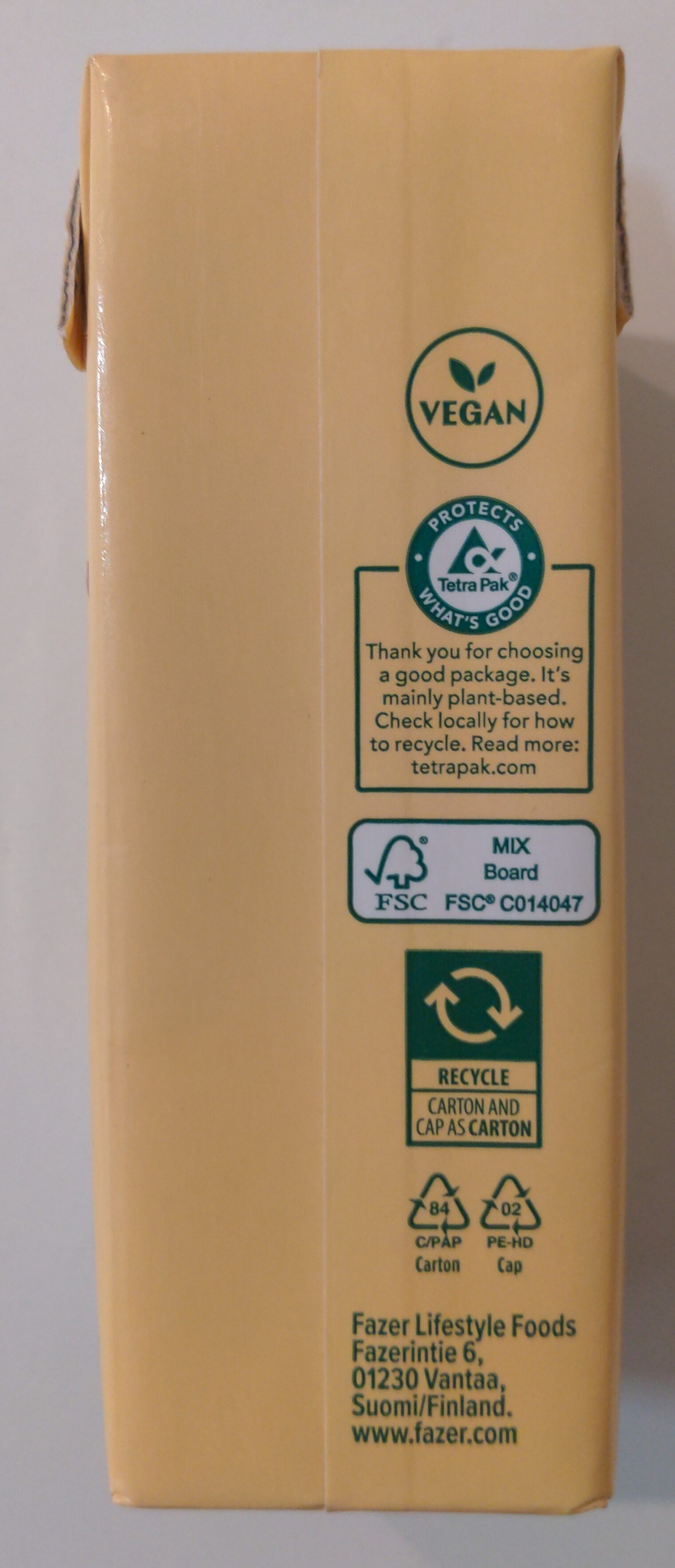Vaahtoutuva kauravaniljakastike - Aito - 250 ml
This product page is not complete. You can help to complete it by editing it and adding more data from the photos we have, or by taking more photos using the app for Android or iPhone/iPad. Thank you!
×
Barcode: 6430015536609 (EAN / EAN-13)
Quantity: 250 ml
Brands: Aito
Categories: Condiments, Sauces, Dessert sauces
Labels, certifications, awards:
Vegetarian, Vegan, FSC, FSC Mix
Traceability code: FSC-C014047
Countries where sold: Finland
Matching with your preferences
Report a problem
Data sources
Product added on by tuukka
Last edit of product page on by moon-rabbit.
Product page also edited by mvainola, roboto-app.
If the data is incomplete or incorrect, you can complete or correct it by editing this page.












